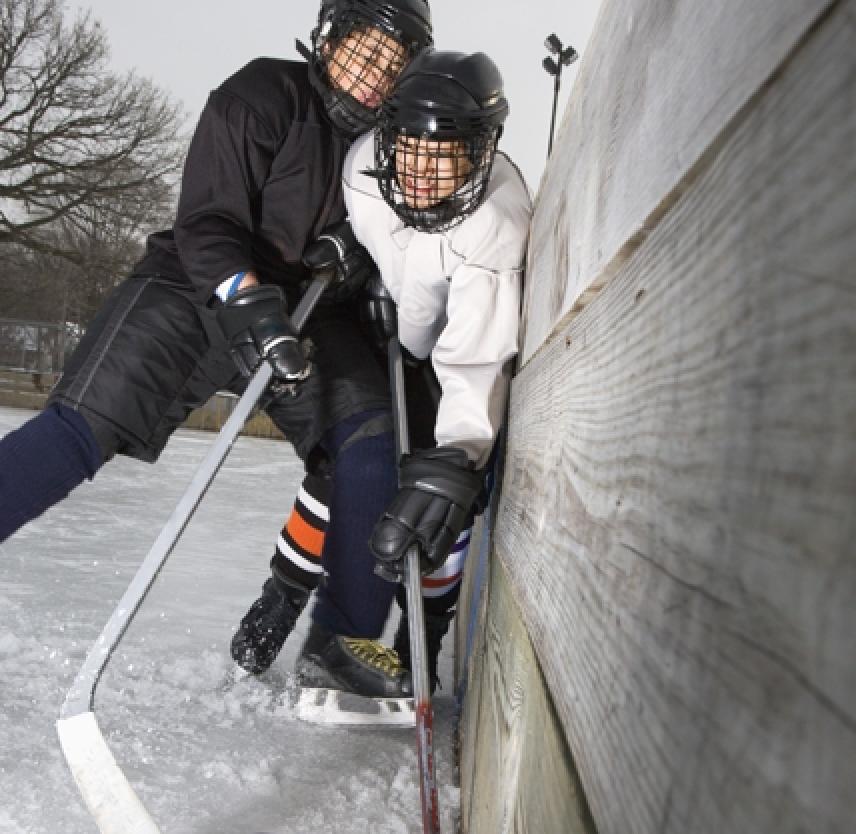
A bump, blow, or jolt to the head can cause a concussion, a type of traumatic brain injury (TBI). Concussions can also occur from a blow to the body that causes the head to move rapidly back and forth. Even a “ding,” “getting your bell rung,” or what seems to be mild bump or blow to the head can be serious.
On the ice, concussions can result from a fall, being struck in the head by the stick or puck, or from players colliding with the ice, with each other, or the boards (sides of a hockey rink).
Recently, CDC teamed up with USA Hockey to develop the "Heads Up: Concussion in Hockey" initiative to offer information about concussions to coaches, parents, and athletes involved in youth sports. Through this partnership, a poster on concussion was disseminated to hockey rinks and to hockey coaches throughout the country.
The "Heads Up: Concussion in Hockey," educational campaign is an expansion of CDC's “Heads Up: Concussion in Youth Sports” and “Heads Up: Concussion in High School” initiatives. These initiatives include materials and information to help coaches of all sports to help identify concussions and take immediate steps to respond when one is suspected.
Prevention and Preparation: On and Off the Ice
Check with your league or school about concussion policies. Concussion policy statements can be developed to include the league or school's commitment to safety, a brief description about concussion, and information on when athletes can safely return to play. Parents and athletes should sign the concussion policy statement before the first practice.
Insist that safety comes first. No one technique or safety equipment is 100 percent effective in preventing concussion, but there are things you can do to help minimize the risks for concussion and other injuries.
For example, to help prevent injuries:
- Enforce no hits to the head or other types of dangerous play.
- Practice safe playing techniques and encourage athletes to follow the rules of play.
- Make sure players wear approved and properly-fitted protective equipment. Protective equipment should be well-maintained and be worn consistently and correctly.
Learn about concussion. Before the first practice, talk to your athlete(s) and others about the dangers of concussion and potential long-term consequences of concussion. Review the signs and symptoms of concussion and keep the four-step action plan with you at games and practices.
See more about CDC’s Heads Up initiatives.
From the Centers for Disease Control and Prevention. www.cdc.gov.
